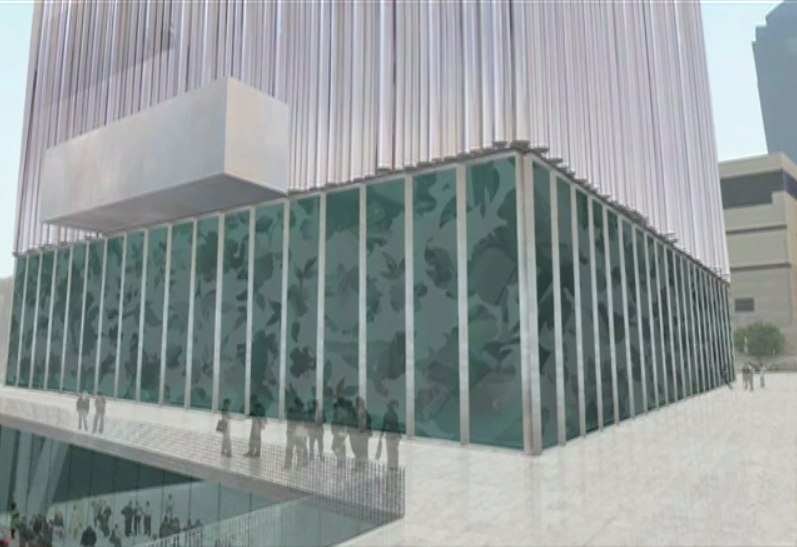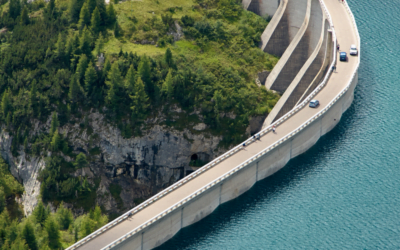In Our Common Future by The Brundtland Commission, the term ‘sustainable development’ was coined and defined as “the development that meets the needs of the present without compromising the ability of future generations to meet their own needs”. Unfortunately, civil engineering is not doing this all the time and this is having a detrimental effect on our planet. As technology innovator, speaker and entrepreneur Kevin Surace summarised bluntly:
What’s happening to the climate is unbelievably bad.
So, what can we do to make civil engineering sustainable? The Royal Academy of Engineering explain that we need to change human activities to a pattern that can be permanently sustained. The aim being to reconcile human needs with the capacity of the planet. They helpfully represent the areas of development that must be sustainable through this Venn diagram:
These three dimensions of sustainability can be explained like so:
- Techno-centric concerns represent human skills and ingenuity and the economic system that we deploy them in
- Eco-centric concerns represent materials, energy resources, our emissions and wastes
- Socio-centric concerns represent our need to live good quality, worthwhile lives
In the hope of inspiring you to break away from the norm, create something wonderful and – more significantly – help save our planet, we’ve got three inspirational trends that sit within each of these dimensions. If they are used in every development, you’ve got sustainable civil engineering at its finest.
Techno-centric: BIM
Building Information Modelling (BIM) is the go-to technology for creating sustainable engineering. Building Information Modelling (BIM) is an intelligent 3D modelling process that lets you produce virtual models of what you plan to build.
But, how does it ensure your design is sustainable? Well, it lets you see the future.
You’ll be able to accurately see if your engineering design will work without any construction taking place. This makes it cost efficient as it reduces reworks and it gives you the power to evaluate and analyse its sustainability, and improve it if necessary.
By utilising human skill and innovation almost immediately, BIM is vital to sustainable technology and economy.
Eco-centric: Recycling plastic in a big way
Shuaib Yunos, BIM Specialist: Civil Infrastructure here at Baker Baynes, wonderfully describes sustainable civil engineering as
the utilisation and implementation of design, construction methodologies and material in an optimised manner to achieve a ‘green’ final product that sustains itself, blends satisfactorily with its surrounding environment and fulfils its design purpose.
There’s a new trend happening in Holland and it’s doing exactly that. A Dutch company called VolkerWessels is taking recycling plastics to a new level: they are making roads.
When plastic gets thrown away, it takes an excruciating 1,000 years for one plastic bottle to decompose. This means it sits in a landfill or out at sea with highly toxic compounds filtering into the environment around us. And in Holland, 96 million tons of carbon dioxide are released into the air because of road building and maintenance.
However, VolkerWessels expects their plastic roads will reduce greenhouse gas emissions at the same time as making roads stronger, increasing their lifespan and being quicker to build. Plus, they are hollow so it will be easy to upgrade them, since pipes for water and sewerage, and the various wires that keep us connected and electrified, can go through the middle.
Plastic is not just getting recycled into roads. It may also turn up in decking and playgrounds too. According to the National Association of Home Builders, the combination of wood fibres and waste plastics is more durable and less toxic than timber.
With plastic being recycled into roads, decking and playgrounds, we’re looking at final products that are sustainable, fulfil design purposes and leave less plastic sitting in landfills. What could be better?
Socio-centric: Multipurpose spaces
US President, John F Kennedy, said
it is not wealth that makes good infrastructure possible, but good infrastructure that makes wealth possible”.
Much like the proverb
give a man a fish, and you feed him for a day; show him how to catch fish, and you feed him for a lifetime
suggests, engineering solutions need to be long-term and sustainable – not quick wins. A trend that is truly demonstrating this is multipurpose buildings.
Rather than having one space for an event, one for a music venue, another for a theatre, and yet another for conferences and exhibitions, architects have started designing one space that can transform into all those functions – and more. While this is cost efficient, it’s also one space instead of five. And if this is done throughout the world then that significantly reduces the carbon dioxide emissions harming our planet. It also gives communities a place for multiple services, fulfilling the socio-centric dimension of sustainability.
One fantastic real-life example of this is a theatre in Dallas. In his talk on building a theatre that remakes itself, architect Joshua Prince explains the process and thinking behind this outstanding theatre. It takes just two people to transform the space into one suitable for a number of other purposes. That’s what we call a sustainable design!
Reece Hanning, the HEAD: AEC BIM Technology at the Baker Baynes Western Cape office, describes what sustainable civil engineering means to him: “It’s design, construct services, structures and spaces that enhance well-being, neighborhood identity and social cohesion whilst being sensitive to the environment, the impacted community and society as a whole.” And for us, multipurpose spaces do exactly this, allowing us to live good quality, worthwhile lives.
If you’re still not convinced by sustainable civil engineering then give our article on designing for sustainability – the top trend of the new millennium a read. By designing for sustainability and executing sustainable civil engineering, we’re taking a step towards not only looking after the needs of the present, but also not compromising the ability of future generations. We only have one planet – let’s look after it.







0 Comments